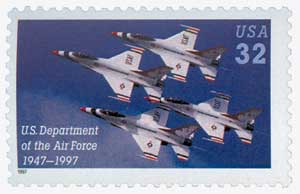
1999 55¢ General William “Billy” Mitchell
Pioneers in Aviation Series
City: Milwaukee, WI
Quantity: 100,750,000
1999 55¢ General William “Billy” Mitchell
Pioneers in Aviation Series
City: Milwaukee, WI
Quantity: 100,750,000
Death Of Billy Mitchell
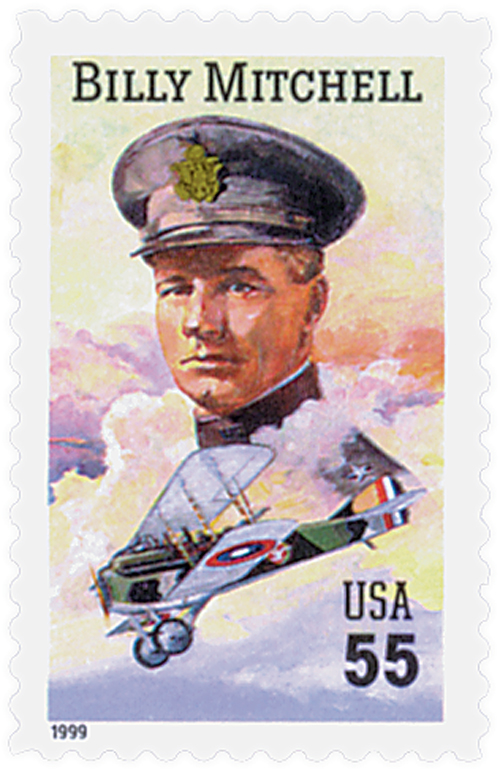
On February 19, 1936, Billy Mitchell, often considered the father of the United States Air Force, died in New York City.
William Lendrum “Billy” Mitchell was born on December 29, 1879, in Nice, France. Mitchell was the son of a wealthy Wisconsin family with political connections. His grandfather had been the wealthiest man in Wisconsin during his lifetime and founded the Milwaukee Road railroad.
After graduating from college at age 18, Mitchell enlisted and served in the Spanish-American War, where he joined the U.S. Army Signal Corps. As early as 1906, he was one of the first to predict that future wars would take place in the skies, as well as on the ground. Mitchell also saw the Wright Brothers fly and soon took flight lessons at the Curtiss Aviation School.
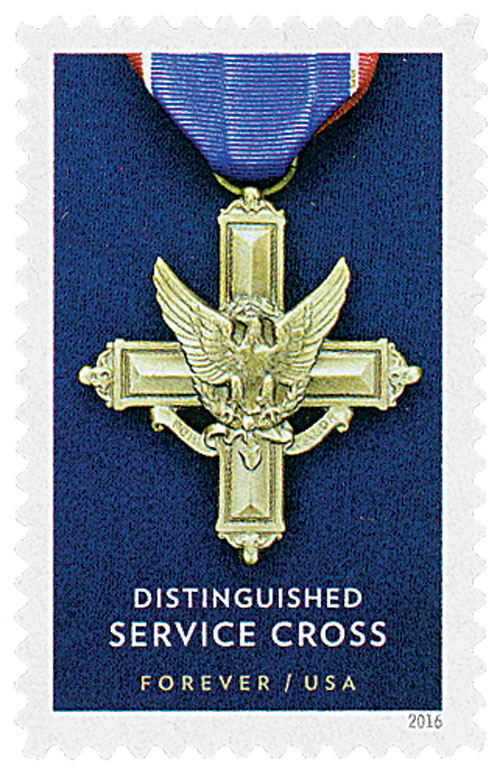
A lieutenant colonel when the U.S. declared war on Germany in 1917, Mitchell went to Paris and organized the Aviation Section. On April 24, he became the first American to fly over German lines and earned a reputation for bravery. Mitchell quickly gained the experience needed to lead American air operations and was promoted to the temporary rank of colonel.
In September 1918, Mitchell planned and commanded almost 1,500 aircraft in the Battle of Saint-Mihiel, which was one of the earliest air-ground offenses in history. By the end of the war, Mitchell commanded all American air combat units in France and was famous across Europe, earning the Distinguished Service Cross and Medal, the World War I Victory Medal, and many foreign awards.
Following the war, Mitchell was made deputy director of the Air Service. He believed air power was the key to winning future wars and would spend the rest of his life promoting the idea of air power in warfare.
Mitchell’s prediction that airplanes would make naval vessels obsolete created hard feelings among military branches, which were compelled to defend their very existence. Mitchell demonstrated his point by sinking a captured German battleship in 1921.
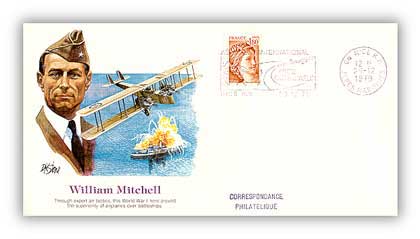
In 1925, Mitchell pointed out the vulnerability of U.S. bases to aerial attack – specifically Pearl Harbor. He described the method of attack and even the time of day (although not the actual date). Sadly, Mitchell would be proven correct.
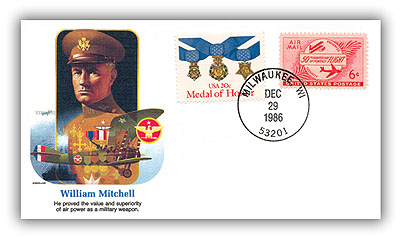
Also in 1925, Mitchell spoke out against senior leaders in the Army and Navy following the crash of the helium-filled rigid airship Shenandoah. He accused them of incompetence and “almost treasonable administration of the national defense.” The following court martial lasted for seven weeks and Douglas MacArthur was among his judges. Mitchell had several people testify on his behalf, including Eddie Rickenbacker (his driver during World War I), Hap Arnold, Carl Spaatz, Robert Olds, and Fiorello La Guardia. Though the public and even some of the judges supported Mitchell, he was found guilty and suspended for five years. However, he chose to resign instead and spent the last decade of his life promoting air power.
Less

Most Orders Ship
within 1 Business Day
90 Day Return Policy
Satisfaction Guaranteed
Earn Reward Points
for FREE Stamps & More



